[kl-bogel] The most dangerous country in the world for women(37 photos)

Experts were asked to program TrustLaw 213 gender experts to assess the country's overall level of risk, and the six risk categories. In the potential risks were health risks, sexual abuse, nonsexual violence, cultural or religious factors, lack of access to resources and human trafficking. A collection of photos that we present to you has been provided by Reuters, to illustrate, what is the dangers women may face in the five countries that are considered the least favorable to women.
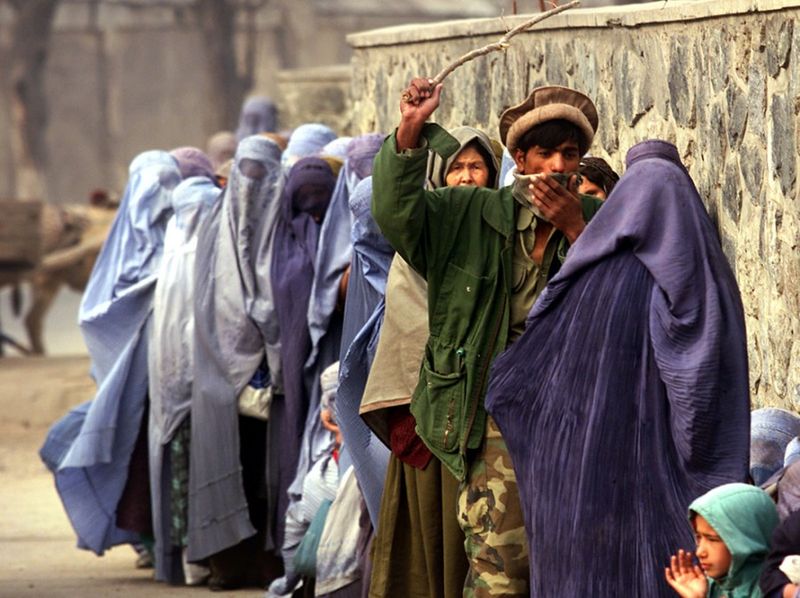
1. Women in Afghanistan - is nearly complete lack of economic rights, which constitutes a serious threat to the life and well-being. An Afghan soldier uses a wooden stick to keep order among the women who stand in line waiting for humanitarian aid in a humanitarian center of the World Food Program in Kabul, 14 December 2001. United started the world's largest food distribution program in the Afghan capital, handing out bags of wheat more than three-quarters of the population of the city destroyed by war. 2
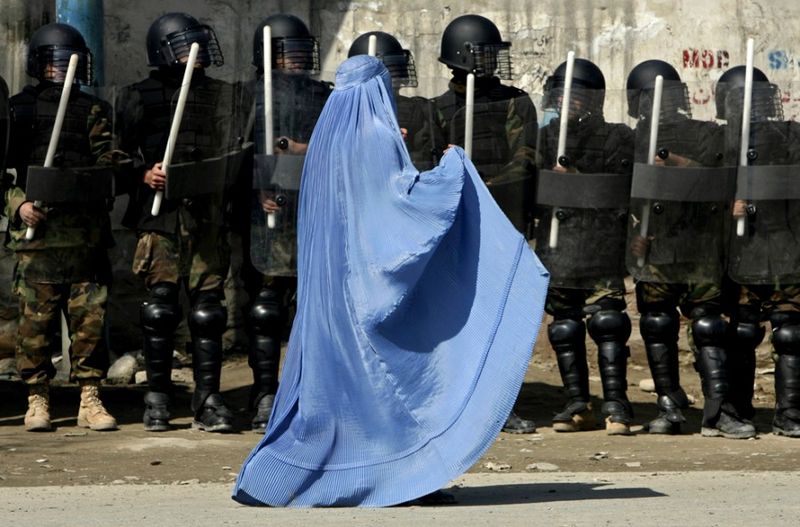
2. "The continuation of the conflict, NATO air strikes and the almost complete absence of the humanitarian program have made Afghanistan a very dangerous place for women," said Antonella Notari, head of the Association «Women Change Makers» - a group that supports women around the world. The photo - a woman walks past a police special task force at the stadium in Kabul, 23 February 2007.
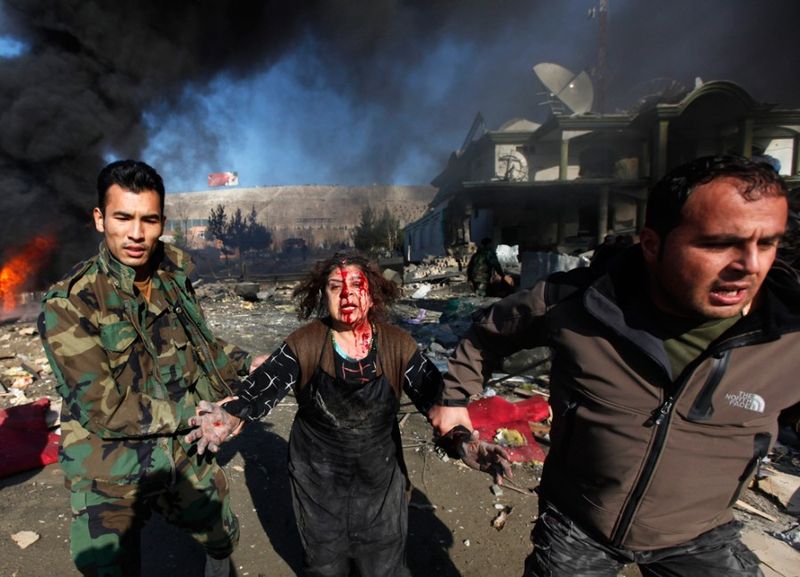
3. Battered women were taken away from the explosion site in Kabul, December 15, 2009. At least four civilians were killed in a bomb attack a suicide bomber in a vehicle nearby, which stops were mostly foreigners, in the main diplomatic area of Kabul and across the street from the home of former vice-president.
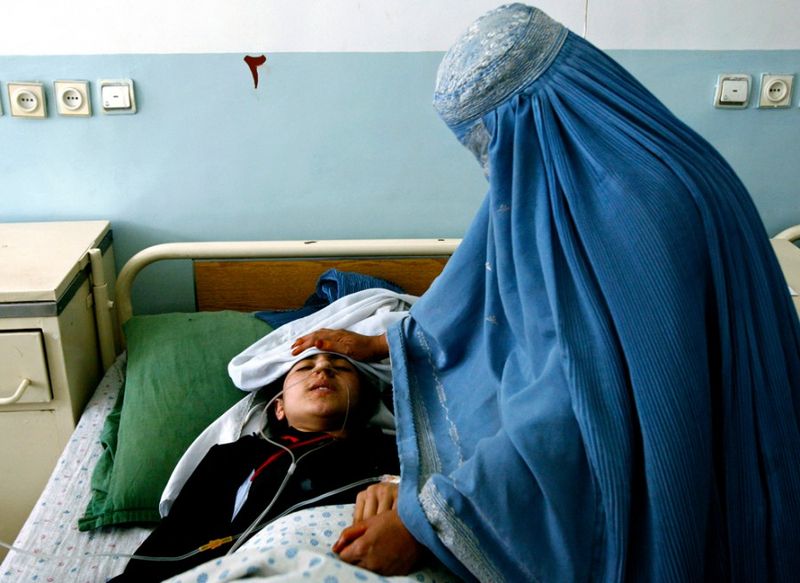
4. Afghan woman beside the bed of his daughter in a hospital in Charikar, 11 May 2009. Nearly 50 Afghan teenagers were hospitalized after being hit by an unknown gas in a girls' school in the northern town of Charikar, this is the second case of mass poisoning of female students over the last month. Attacks on schools for girls increased, especially in the east and south. The year before, a group of schoolgirls in Kandahar splashed acid in the face of a man who opposed their right to attend school.

5. The almost complete absence of economic rights, endanger residents living in Afghanistan. In the photograph: a woman begging on the road to Kabul, while the snow falls, 13 January 2009.

6. "In Afghanistan, women have one of eleven chance of dying in childbirth." Afghan mothers visit the clinic in the area Eshkashem Badakhshan Province, north-east of Kabul, April 23, 2008.
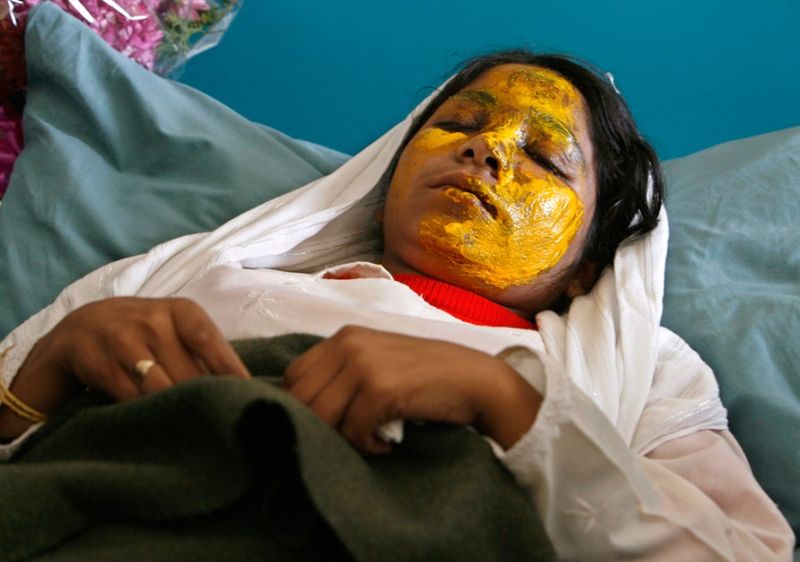
7. Seventeen Shamsia in her face splashed with acid Taliban, lies in a hospital in Kabul, 15 November 2008.
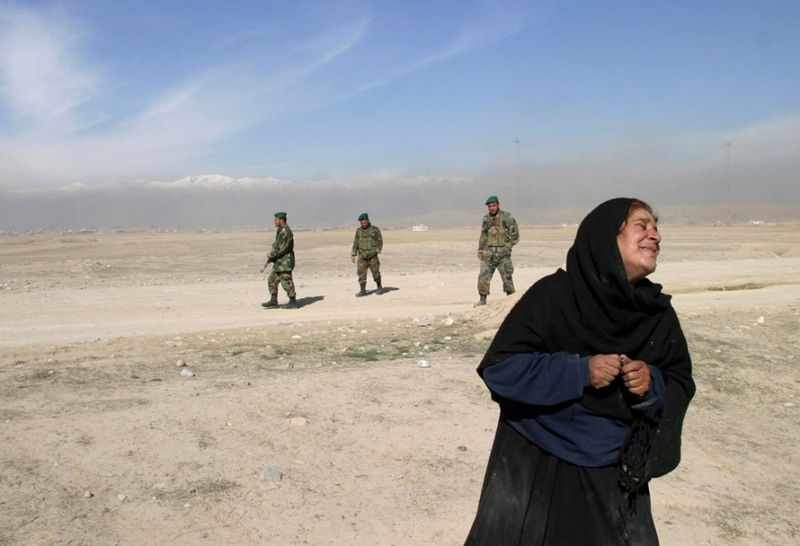
8. Relative Afghan prisoner cries outside the Pul-i-Charkhi on the eastern outskirts of Kabul, Afghanistan, February 28, 2006. The siege at Pul-i-Charkhi, the largest prison in Afghanistan, lasted several days, but the government has until recently expressed hope for a peaceful resolution to the conflict, despite the bloody uprising of hundreds of prisoners.
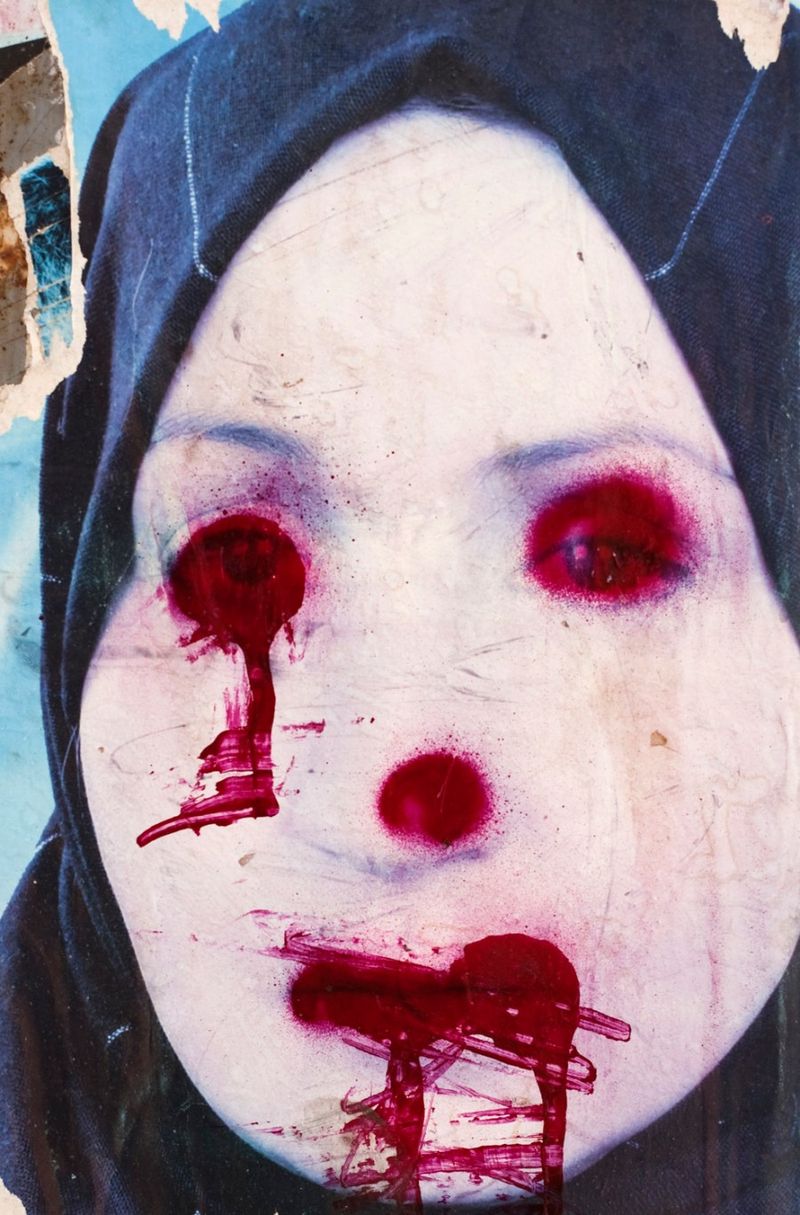
9. Women who dared to stand or lay claim to some sort of significance, are a constant threat of violence and death. The photo - damaged poster Afghan women, who decided to run for parliament on the wall in Herat, western Afghanistan, September 8, 2010.
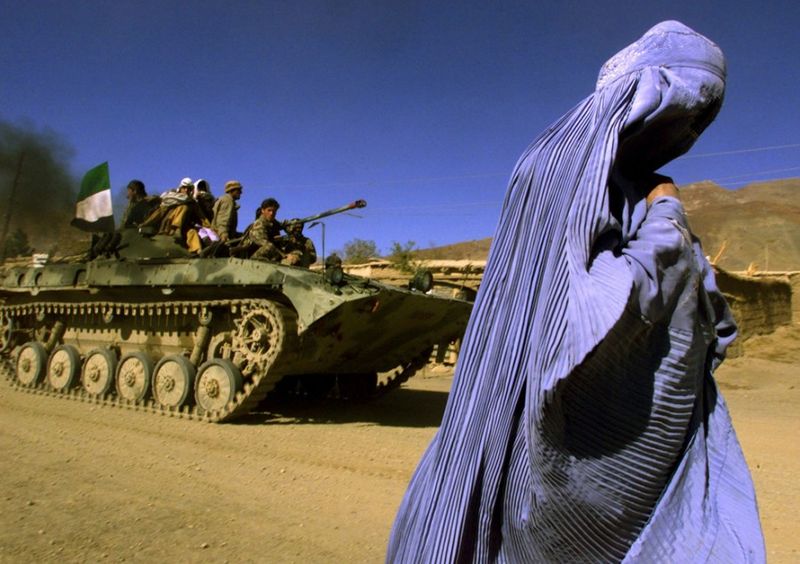
10. Afghan woman in a traditional burqa, burqa on the road against the backdrop of armored cars with armed soldiers on the outskirts of the Northern Alliance, Jabal Seraj mustache, about sixty kilometers north of the Afghan capital of Kabul, November 4, 2001. The Northern Alliance, a grouping of mostly ethnic Uzbek and Tajik fighters in the north, is viewed with suspicion and hostility of ethnic Pashtuns, who live in other areas.
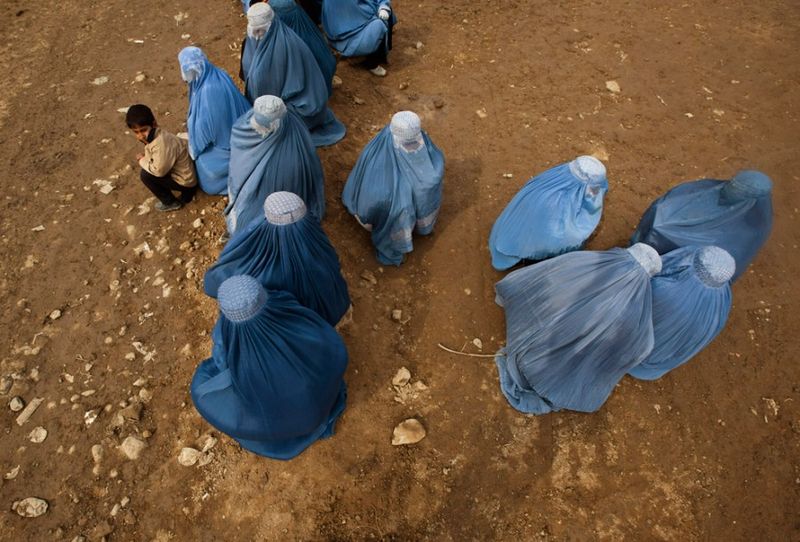
11. Afghan women await their turn at the distribution center of the World Food Programme (in Kabul, 10 February 2011.
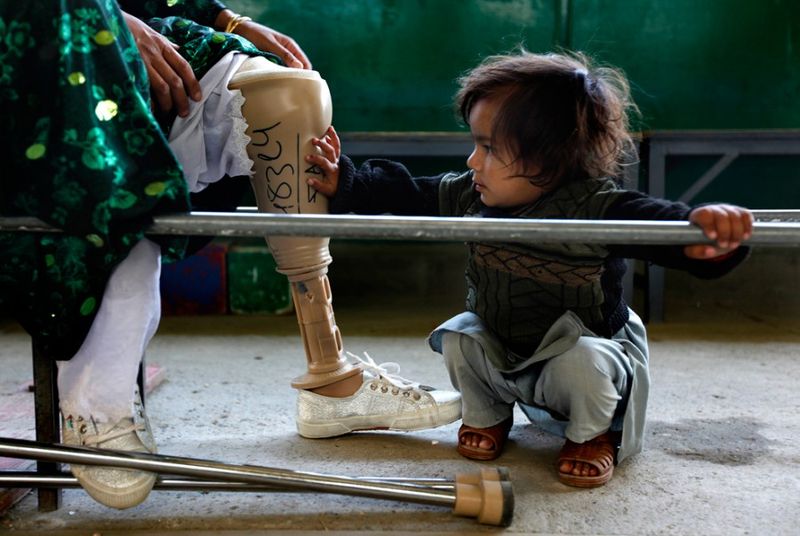
12. Afghan girl touches her mother's dentures in Ali Abad Orthopaedic Centre in Kabul, 12 November 2009. Center, who led most people with disabilities, aims to educate and rehabilitate landmine victims and people with any type of physical deformity or disability to help them better integrate into society. They also offer patients interest-free micro-credits for the sum of six hundred dollars for a period of eighteen months.
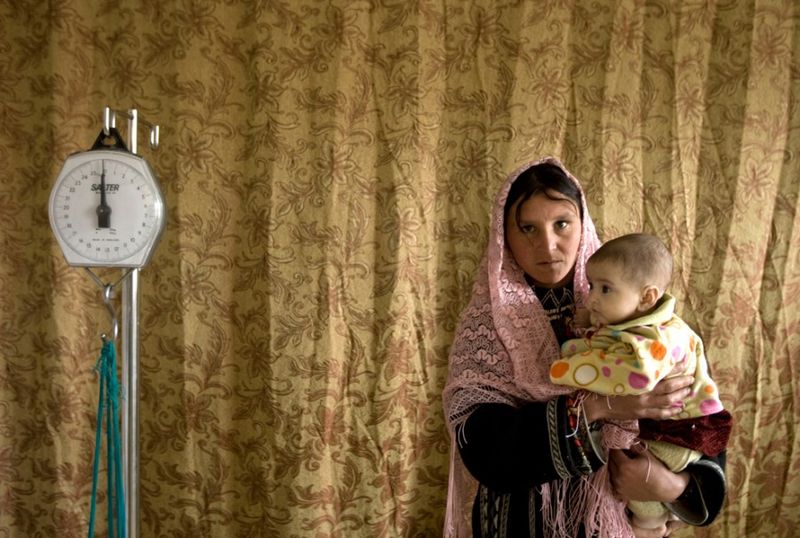
13. Afghan mother holds her child at the time. as she visits the clinic in the area Eshkashem Badakhshan Province, north-east of Kabul, April 23, 2008. Women die in childbirth every day in Afghanistan, a country with one of the highest rates of maternal mortality worldwide.
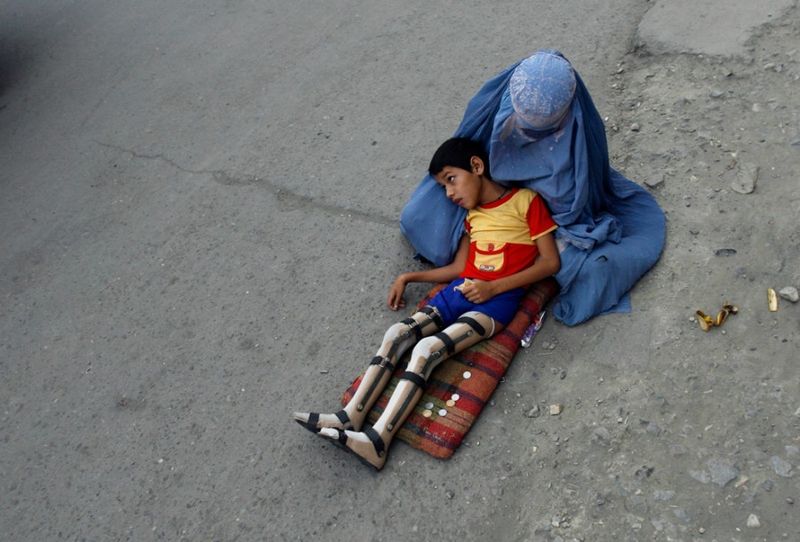
14. Afghan woman in a burqa with her son, whose legs were amputated, begging on the streets of Kabul, August 4, 2008

15. Women who attempt to speak out or take on social roles that challenge gender stereotypes of what is acceptable to women, including women who dare to work the police or news anchors are often subjected to intimidation or violence. The woman in the photo took part in the event to discuss the presidential candidates in Kabul, 11 August 2009.
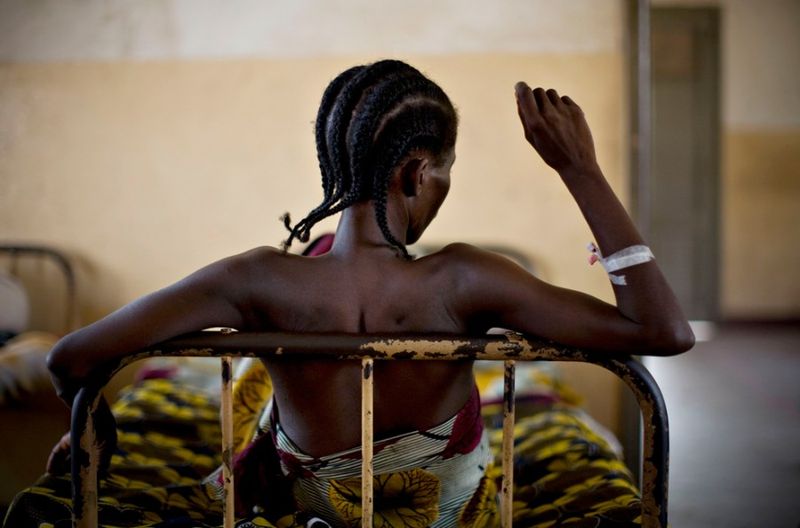
16. Staggering levels of sexual violence in eastern Democratic Republic of Congo makes this country the second most dangerous place for women. One recent study conducted by American experts, claims that more than 400,000 women are raped there every year. United Nations recognized the Congo capital of rape in the world. The photo - a woman who recently had an operation, lies in a hospital bed in a general hospital in Dungu in the north-eastern Congo, 17 February 2009.
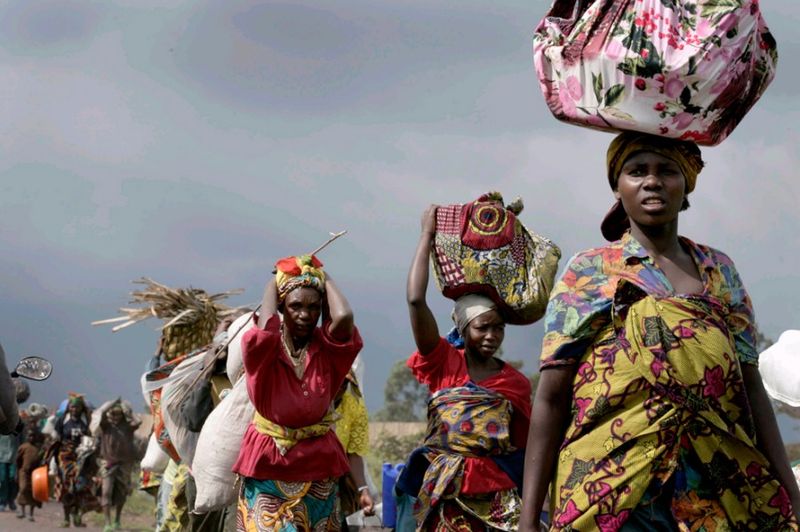
17. "Human rights activists say a group of militants and soldiers are chosen as objects of violence against women of all ages, including girls as young as three years old and older women," according to the data of the study. "Women are gang raped, raped with bayonets, and there have been cases of how, after the violence, the women shot in the genitals. In the picture - people bezhat after renewed fighting in the village of Kibati, November 7, 2008. Fighting between rebels and government troops erupted in eastern Congo, and African leaders have called for an immediate ceasefire to end the conflict.
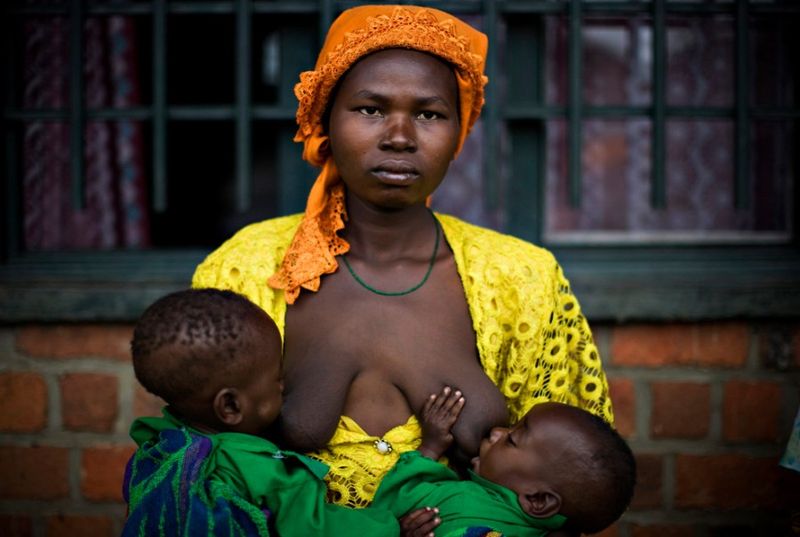
18. The mother breast-feeds her two malnourished children in a Catholic humanitarian mission in the center of the captured rebels of Rutshuru, 70 km (50 miles) north of Goma in eastern Congo, 13 November 2008.
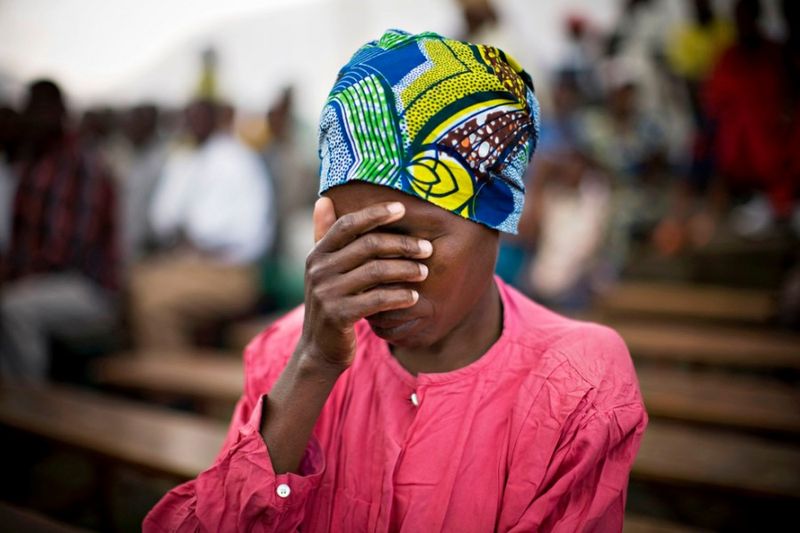
19. A woman who has lost a roof over their head as a result of the war, prays during Sunday services at the church in the heart of Don Bosco in Goma in eastern Congo, 23 November 2008.

20. A woman, left homeless by the war, is in a tent with a baby in a makeshift camp near Goma in Kibati in eastern Congo, 13 February 2009. Congo military authorities say that more than forty Rwandan Hutu rebels killed in air raid According to human rights during the war killed about a hundred civilians.
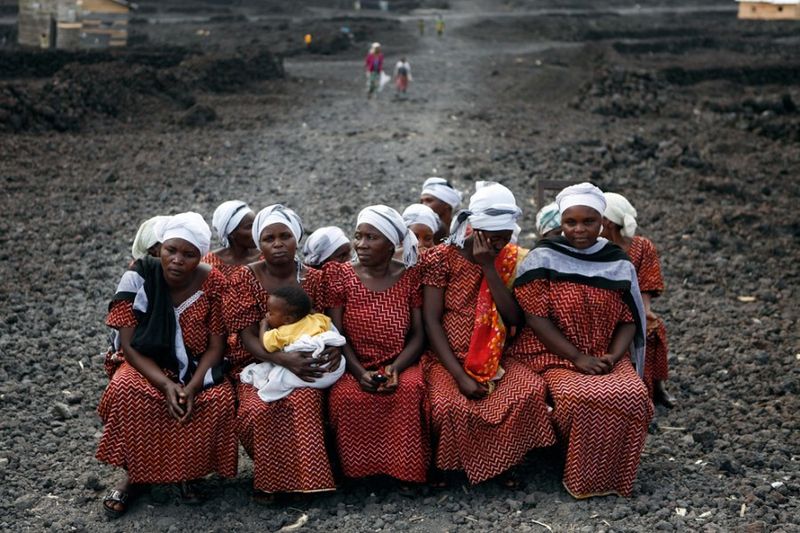
21. The women of the choir sitting on benches on the background of the lava flows formed by a volcanic eruption in 2002 in the eastern Congolese city of Goma August 14, 2010. 22

22. Government soldiers carries an infant on her back in Mushaki in eastern Congo, 26 January 2009.
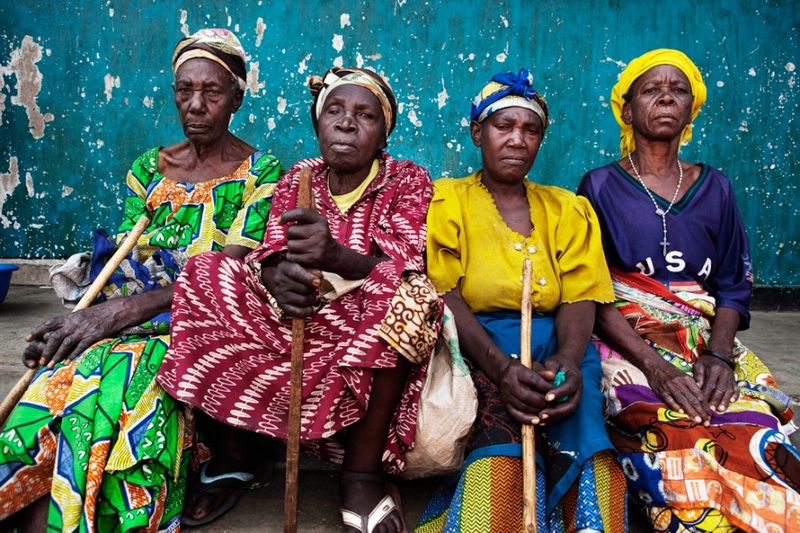
23. Displaced by war-sided 71 Ellen Namikano, seventy MartaKanigi Rebecca, 65-sided Venanzo Ndamkunzi 74-sided Atia Eugenia Mobato sit together on the steps of the building in the village of Mugunga, west of the eastern Congolese city of Goma, August 24, 2010. All four women have often fled fighting in North Kivu province over the past four years, despite efforts to establish peace in the Democratic Republic of Congo.

24. Dying woman from Rwanda is trying to feed her baby next to hundreds of corpses awaiting burial in a mass grave near the refugee camp Munigi, twenty kilometers north of Goma. Thousands of refugees died from cholera or dehydration, July 23, 1994.
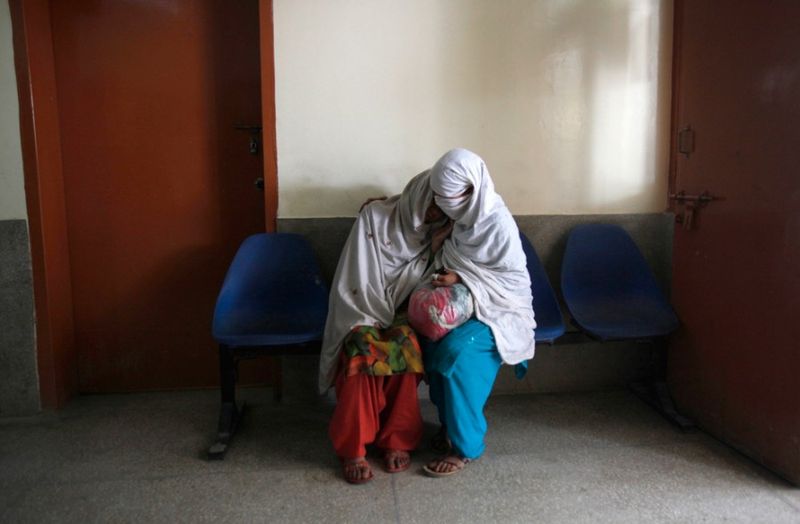
died from cholera or dehydration, July 23, 1994.
25. Pakistan ranks third on the basis of cultural, tribal and religious practices that are detrimental to women. "Among the threats include acid attacks, child and forced marriage and the punishment or retribution by stoning and other physical violence." In the photo the woman comforted her mother while waiting for a medical examination at a hospital in the region of Swat, located in the restive district of north-western border of Pakistan, March 21, 2010.
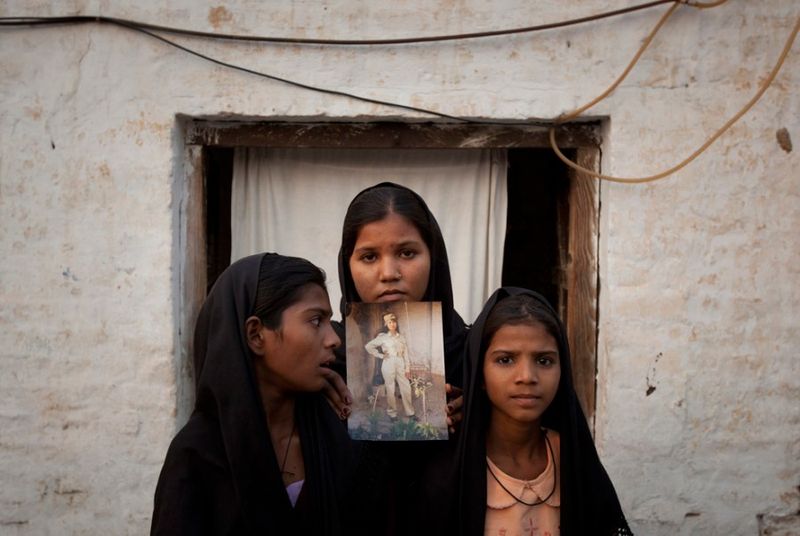
26. Pakistani Christian woman's daughter, Asia Bibi, a photograph of his mother at his home in Sheikhupura in Punjab province in Pakistan, November 13, 2010. Asia Bibi, a Christian mother of four children, was sentenced to death for blasphemy.
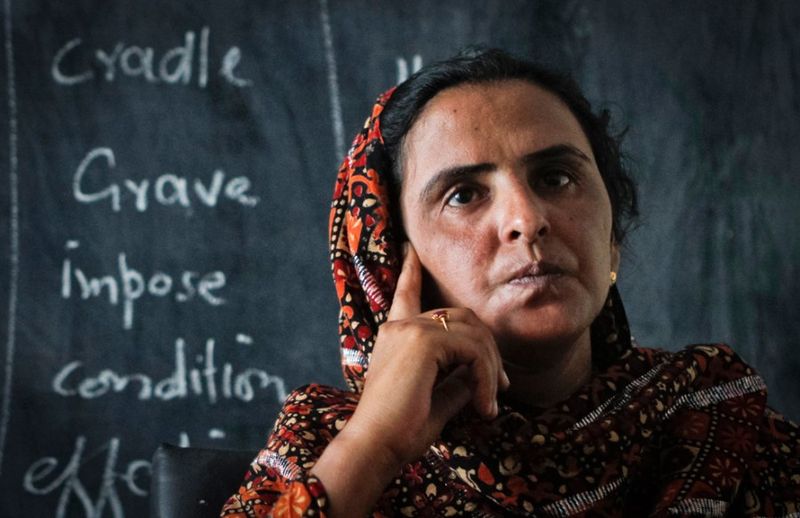
27. Mukhtaran May is interviewed at a school in Meervala situated in Muzaffargarh district in central Punjab province of Pakistan, April 22, 2011. May, Pakistani, the victim of collective rape, sanctioned by the rural community, has become a symbol of the oppressed women of the country.
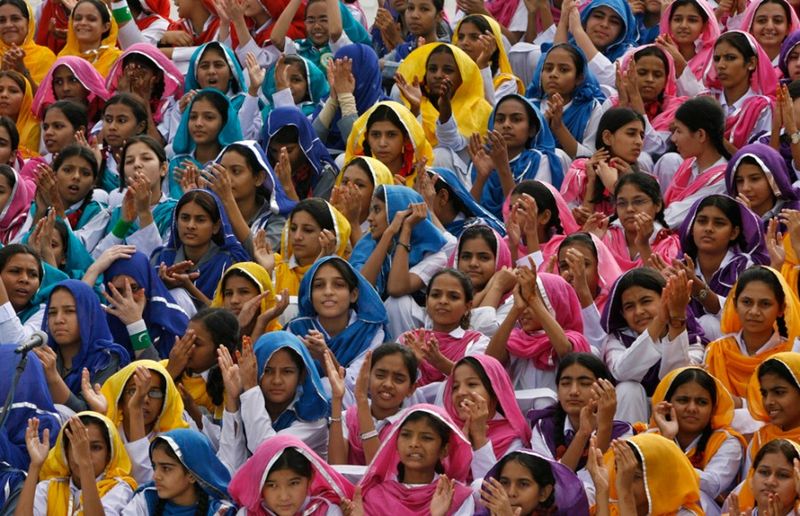
28. "Pakistan has one of the high rates of homicide due to dowry, the so-called honor killings, and early marriage." According to the Human Rights Commission of Pakistan, at least a thousand women and girls are dying because of the so-called "honor killings" every year . The photo - schoolchildren singing the national anthem of Pakistan during a rehearsal at the mausoleum of Mohammed Ali Jinnah, the founder of Pakistan in Karachi, August 13, 2009, on the eve of Independence Day.
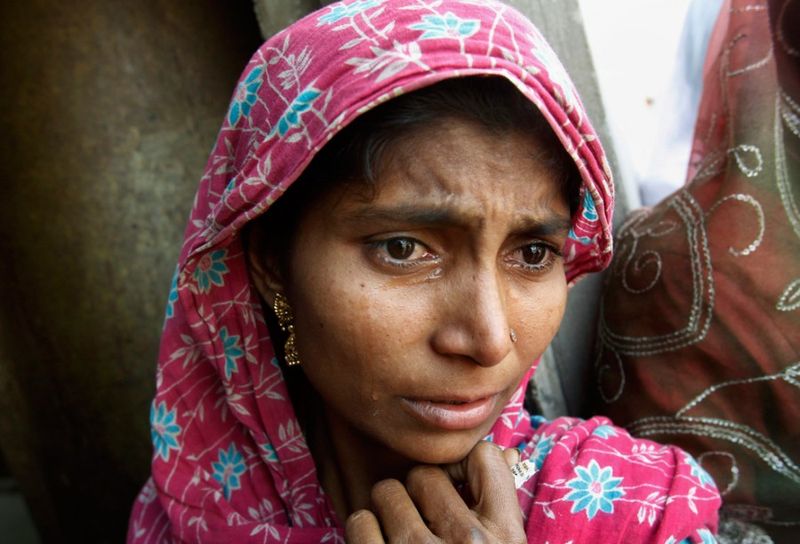
29. India is the fourth most dangerous country for women. "The Central Bureau of Research in India said that in 2009 approximately 90% of its turnover in human trafficking occurred in the country and, at that time there were about three million prostitutes, of whom 40% were children. The photo - a woman crying, sitting outside his home after police arrested the members of her male family in a village near Bhatta Parsaul Gautam Buddha Nagar northern Indian state of Uttar Pradesh, on May 8, 2011.
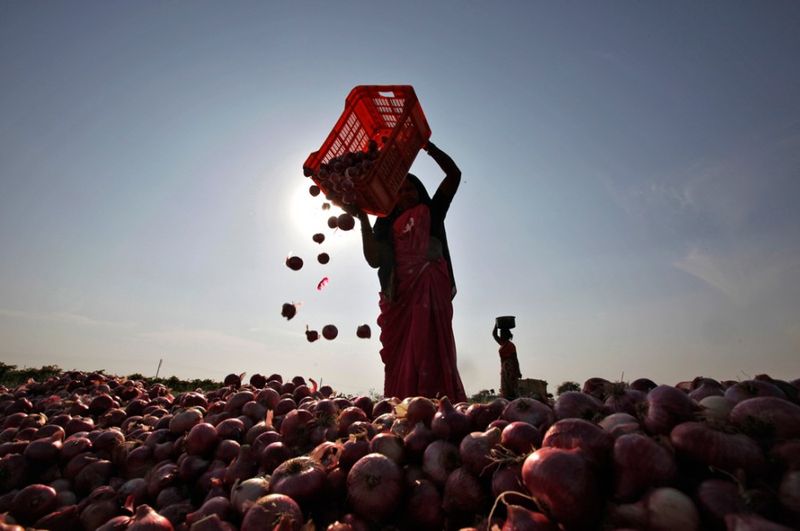
30. Women working in the onion fields in Pimpalgaon, about 215 dynamometer (133 miles) north of Mumbai, January 23, 2011. Onion is the main ingredient for almost all Indian dishes. The sharp rise in prices for vegetable products often leads street protests in a country where more than 40 percent of the 1.2 billion. population lives on less than $ 1.25 a day.
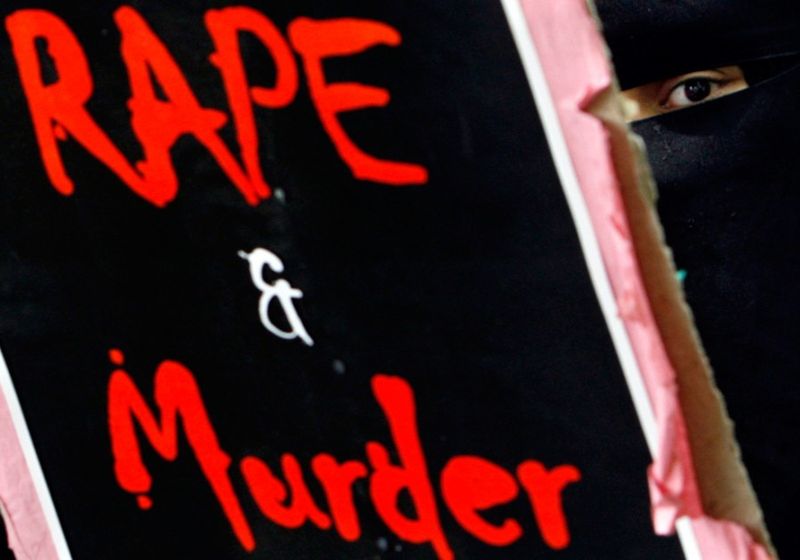
31. Forced marriages and forced labor is also added risk for women. "Up to 50 million girls are believed to have" disappeared "in the last century due to female infanticide and abortion," told the representatives of the UN Population Fund. In this country, parents prefer to have boys rather than girls. The photograph Muslim woman in veil holding a poster during a protest in New Delhi, May 16, 2007.
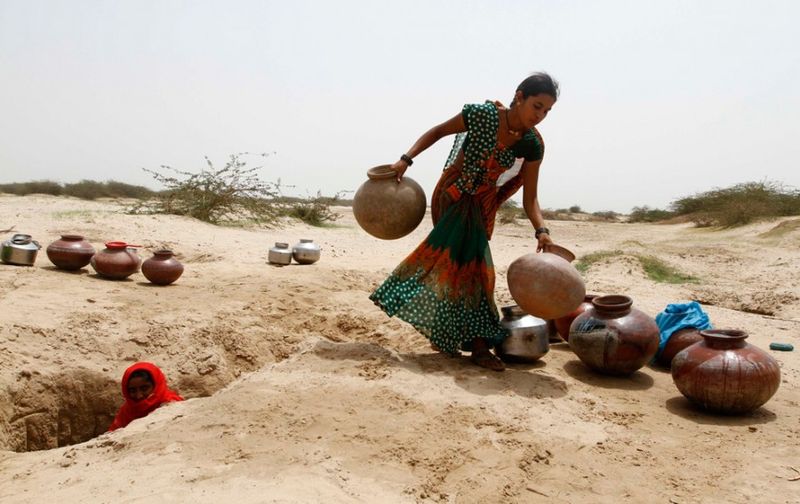
32. Woman carrying empty pitchers, while the second woman fills a pitcher with drinking water from the shrinking of the river in the village Sukfur Banas, north of the western Indian city of Ahmedabad May 12, 2011.
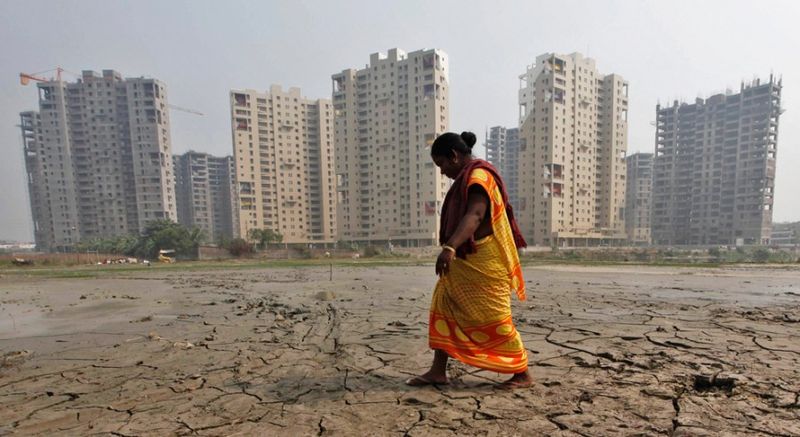
33. A woman passes by residential buildings in Calcutta, January 25, 2011.

34. Somalia, a state in a state of political disintegration, characterized by high levels of maternal mortality, rape, female genital mutilation, and limited access for women to education and health. The photo - Somali refugees who arrived in the camp Dagahali, build temporary shelters in Dadaab, near the Kenya border Somalia, April 3, 2011.
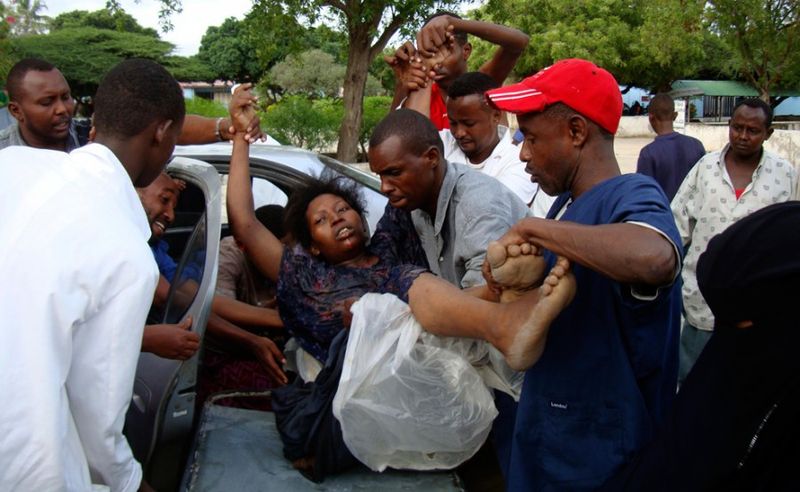
35. "Rape happens on a daily basis, and mutilation genital organs, is a must for every girl in Somalia. Add to that the famine and drought. Add to this a permanent armed confrontation ... and all it means is that you can die at any minute, any day. " The photo - Mogadishu residents have a woman injured in fighting between African Union peacekeepers and Islamist forces in Somalia's capital, October 28, 2009.
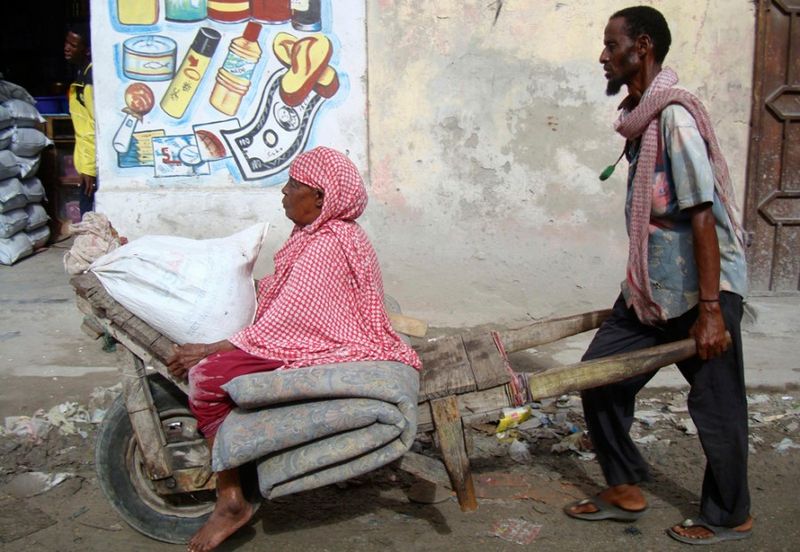
36. Refugees are leaving the Somali capital Mogadishu, 19 July 2010.
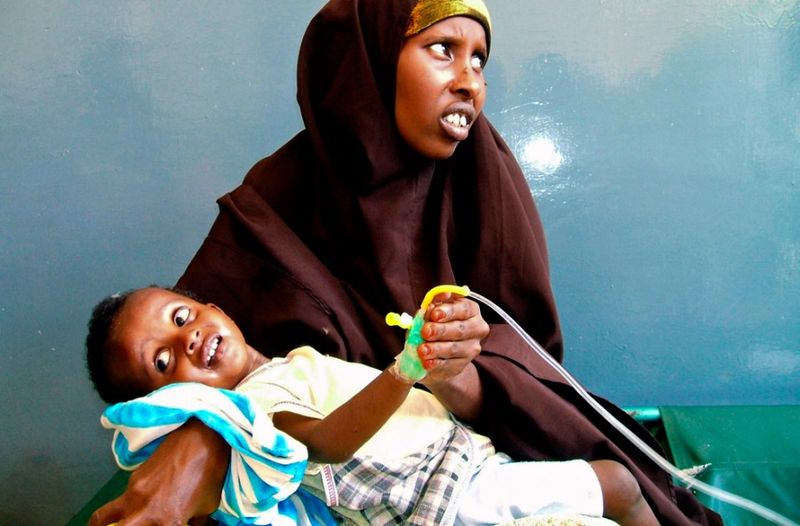
37. The most dangerous thing a woman can face than in Somalia - is pregnant .. When a woman becomes pregnant her chances of survival are fifty-fifty, because there is no pre-natal medical monitoring. There is no specialized hospitals or health systems, there is nothing. The photo - a woman holding the arms of his suffering from malnutrition of the child in the hospital Banaadir in Somali capital, Mogadishu, May 5, 2009.
via Source
You received this message because you are subscribed to the Google Groups "kl-bogel" group.
To post to this group, send email to kl-bogel@googlegroups.com
To subscribe or unsubscribe at http://groups.google.com.my/group/kl-bogel/subscribe
For more options, visit this group at http://groups.google.com/group/kl-bogel?hl=en
Sebarang email pertanyaan, hantar kepada abangmod@gmail.com
Comments
Post a Comment